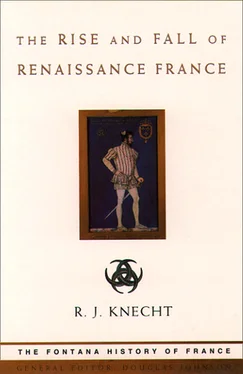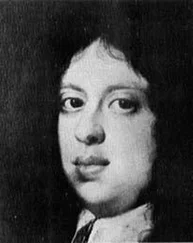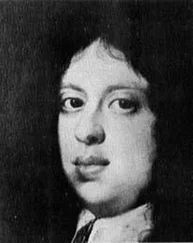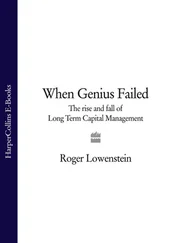Sooner or later trouble was likely to break out between the king and the faculty. While Francis was ready to suppress Lutheranism, he was unwilling to silence the voice of Christian humanism. The first sign of conflict occurred in November 1522, when Guillaume Petit, the king’s confessor, complained to the faculty about the sermons of Michel d’Arande, an Augustinian hermit who had become Marguerite’s almoner. By 1523 the Faculty of Theology and the parlement were seriously worried about the growth of heresy. Lutheran books were being reported from many parts of the kingdom, and evangelical preachers were increasingly active. In June 1523 the faculty was told of scandals provoked by the publication of Lefèvre’s Commentarii initiatorii in IV Evangelia , but it decided not to examine the work after a warning received from Chancellor Duprat. In July it summoned Mazurier and Caroli, two members of the Cercle de Meaux , to answer a complaint arising from their sermons. This marked a change of policy by the faculty: hitherto it had been content to judge doctrine; now it was encroaching on episcopal jurisdiction. The faculty’s action was, in effect, an attack on the entire Cercle de Meaux. In August, prompted by the publication of Lefèvre’s edition of the New Testament, Béda forced through the faculty a condemnation of all editions of Scripture in Greek, Hebrew and French, causing Francis to intervene again. In April 1524 he forbade any discussion of Lefèvre’s work, alleging that he was a scholar of international renown. In October he nipped in the bud a move by the faculty to condemn Erasmus.
By 1523 heresy was so firmly entrenched in France that the Faculty of Theology and the parlement decided that censoring books was not enough: it was time to make an example of the heretics themselves. On 13 May the home of Louis de Berquin, a young nobleman-scholar, was searched by the parlement’s officials. On his shelves they found books by Luther and other reformers as well as Berquin’s own writings. These the faculty was asked to scrutinize, but the king, after giving his consent, changed his mind: he appointed a special commission, headed by Duprat, to carry out the examination. But the faculty, having already examined Berquin’s books, condemned them, and on 1 August he was imprisoned by the parlement. Four days later he was sent for trial on a heresy charge by the bishop of Paris, but Francis evoked the case to the Grand conseil. Meanwhile, Berquin was set free by royal command and allowed to go home. His books, however, were burnt outside Notre-Dame.
EIGHT Defeat, captivity and restoration(1525–7)
In September 1524 everything seemed set fair for the king of France. The threat of internal rebellion had been removed; Bourbon was beating a hasty retreat to Italy after failing to capture Marseille. Though advised to wait until the spring before invading Italy, Francis was keen to reach Lombardy before the imperial forces could regroup. On 17 October he appointed his mother as regent and soon afterwards led a powerful army across the Alps. The weather being exceptionally mild, he accomplished the crossing in record time. As he pressed forward into Lombardy, the imperialists retreated to Lodi, abandoning Milan. Francis now had the choice of either pursuing them to Lodi or besieging Pavia. He chose the latter, prompting the imperial captain, the marquis of Pescara, to exclaim: ‘We were defeated, soon we shall be victorious.’ For Pavia was a hard nut to crack, protected on three sides by a wall and on the south side by the River Ticino. The garrison, consisting of German and Spanish veterans, was commanded by Antonio de Leyva, one of the ablest captains of his day.
The battle of Pavia (24 February 1525)
The French began bombarding Pavia on 6 November. Within three days they had breached the wall, but an assault by them was repulsed with heavy losses. They then tried to divert the Ticino by building a dam, but it was washed away by torrential rains. The siege degenerated into a blockade punctuated by skirmishes and artillery duels. Francis then made a controversial move: he detached 6000 troops from his army and sent them under the duke of Albany to conquer Naples. The idea may have been to draw the viceroy of Naples away from Lombardy, but he chose to stay put. Had Albany moved faster, he might have taken advantage of popular unrest in Naples; but instead he allowed himself to get bogged down in Sienese politics. His expedition, however, did help to bring the new pope into the war on the French side. Clement VII had so far remained neutral in order not to jeopardize the rule of his Medici kinsmen in Florence, but on 25 January 1525 he allowed Albany free passage through the States of the Church.
The siege of Pavia was a grave tactical error. Though Francis was advised to retire to Milan for the winter, he refused on the ground that no king of France had ever besieged a town without capturing it. Believing that Pavia would soon capitulate, he sentenced his men to spend four months in appalling conditions outside the town. Their main camp on the east side of Pavia was strongly fortified. They also occupied the walled park of Mirabello to the north of the town. Within the park the terrain was open and rolling with clumps of trees and shrubs; it was also criss-crossed by numerous brooks and streams. On 22 January the imperialists marched out of Lodi as if they intended to attack Milan. Then, as the French failed to react, they veered south-west and pitched camp within a stone’s throw of the French. Only the Vernavola, a small tributary of the Ticino, kept the two armies apart.
On 23 February the imperial commanders, Charles de Lannoy, viceroy of Naples, and Bourbon, tried to break the deadlock. They moved out of their camp after nightfall, leaving only a token force behind, and marched north along the east wall of the park. Two hours later they halted near the north side, and sappers, using only picks and battering rams, opened up three gaps in the wall. At dawn the first troops entered the park. Despite a heavy mist they were spotted by the French, who opened fire with their guns. The rest of the imperial army, meanwhile, had entered the park. The sequel is not clear, but it seems that Francis and his cavalry had formed up within the park. As the imperialists advanced, the king led a cavalry charge and got in the way of his artillery which had to stop firing. His infantry was left far behind. After breaking through the enemy line, Francis and his men-at-arms came within range of Spanish arquebusiers who had been carefully concealed in copses around the northern edge of the park. The French nobles with their suits of armour, plumed helmets and distinctive horse trappings offered easy targets. As they were picked off by the arquebusiers they crashed to the ground like so many helpless lobsters. After the king’s horse had been killed, he continued to fight on foot, valiantly striking out with his sword (now on display at the Musée de l’Armée, Paris), but was gradually surrounded by enemy soldiers anxious to earn a king’s ransom. In their eagerness to snatch pieces of his armour as evidence for their claim, they might easily have killed him. At this juncture Lannoy appeared and Francis surrendered to him. Meanwhile, the battle raged in various parts of the field. As huge blocks of French and imperial infantry collided there was terrible carnage, and many Swiss troops were drowned as they tried to ford the Ticino. By noon on 24 February the battle was over. The imperialists had won the day and Francis was their prisoner.
Pavia was the greatest slaughter of French noblemen since Agincourt. Among the dead were many illustrious captains and also close friends of the king. They included Bonnivet, Giangaleazzo da San Severino, Marshal Lapalice, François de Lorraine and Richard de la Pole, the so-called ‘White Rose’. Marshal Lescun and the king’s uncle, the Bastard of Savoy, had been fatally wounded. Apart from the king, prisoners included Henri d’Albret, king of Navarre, Louis comte de Nevers, Anne de Montmorency, and the seigneurs of Florange, Chabot de Brion, Lorges, La Rochepot, Annebault and Langey. Among important French nobles only the king’s brother, Charles d’Alençon, escaped death and capture. He died on 15 April, soon after returning to France, some said of shame, others of sorrow. About 4000 French prisoners who were not worth a ransom were freed on parole.
Читать дальше












